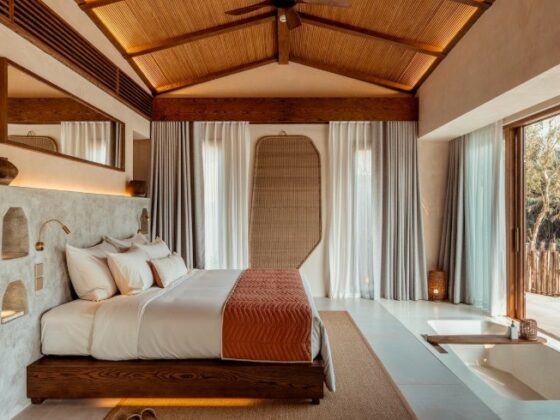
In the hospitality industry, sustainability and sanitation are no longer optional; they are operational necessities. While front-of-house initiatives often receive the spotlight, it is the back-of-house logistics that quietly shape a hotel’s environmental footprint and hygiene standards. From laundry systems and waste handling to material choices and workflow procedures, the decisions made behind the scenes have far-reaching implications for both guest experience and global impact.
The Hidden Impact of Hotel Operations
Back-of-house areas, laundry rooms, waste stations, storage zones, and service corridors are hubs of activity that consume significant resources. Traditional laundry operations, for example, are among the largest consumers of water and energy in a hotel. A single commercial washer can use 20–30 gallons of water per load, and dryers often rank among the highest energy-consuming appliances. Without efficient systems in place, these operations can strain both budgets and the environment.
Waste handling is another critical area. Hotels generate large volumes of food, textiles, and packaging waste daily. According to Clean the World, a typical 200-room hotel can produce up to 300,000 pieces of single-use plastic per month. Without proper segregation and recycling protocols, this waste contributes to landfill overflow and greenhouse gas emissions.
Smart Systems and Sustainable Infrastructure
To address these challenges, many hotels are turning to smart infrastructure. Sensor-driven laundry systems optimize water levels, detergent use, and cycle times based on load size and fabric type. These innovations not only reduce resource consumption but also extend linen life, lowering replacement costs and textile waste.
In waste management, hotels are adopting zonal sorting systems and composting programs. Food waste tracking devices and digital inventory tools help reduce over-purchasing and spoilage. Some properties have implemented refillable amenities and bulk dispensers to minimize single-use plastics, while others partner with recycling organizations to repurpose used soaps and textiles.
Material Choices That Support Hygiene and Longevity
The materials used in back-of-house logistics play a pivotal role in sanitation and sustainability. Vinyl liners, commonly used in carts and trucks, offer a durable and hygienic solution. High-quality vinyl is flame-retardant, mold- and mildew-resistant, UV-stable, and tear-resistant—making it ideal for high-traffic environments where cleanliness is paramount.
Color-coded carts and cleaning tools are also gaining traction. These systems reduce cross-contamination by assigning specific colors to designated zones or tasks. For example, red may be used for restroom sanitation, green for food prep areas, and blue for general cleaning. This visual coding simplifies training, enhances compliance with hygiene protocols, and supports infection control across departments.
Balancing Guest Expectations With Operational Efficiency
One of the challenges in implementing sustainable back-of-house practices is balancing them with guest expectations. In luxury segments, there may be concerns that eco-friendly measures could compromise service quality. However, transparency and education are the key. Hotels that communicate the environmental benefits of their practices—such as refillable water bottles or linen reuse programs—often find that guests respond positively.
Moreover, sustainability can enhance brand reputation and guest loyalty. A Forbes study found that hotels adopting green practices reported a 15 percent increase in occupancy and stronger customer retention. As travelers become more environmentally conscious, they increasingly seek accommodations that align with their values.
Looking Ahead: A Collective Responsibility
Sustainability and sanitation in hotel logistics require a collective effort. It is not the responsibility of a single department but a shared commitment across operations. Measurement and reporting are essential to track progress and meet evolving regulatory standards. Tools like the Hotel Carbon Measurement Initiative are helping properties quantify their environmental impact and provide data for corporate clients.
As the industry moves toward net-zero goals and circular economy models, back-of-house logistics will continue to play a central role. By investing in smart systems, durable materials, and cross-functional training, hotels can create cleaner, more efficient operations that support both people and the planet.








